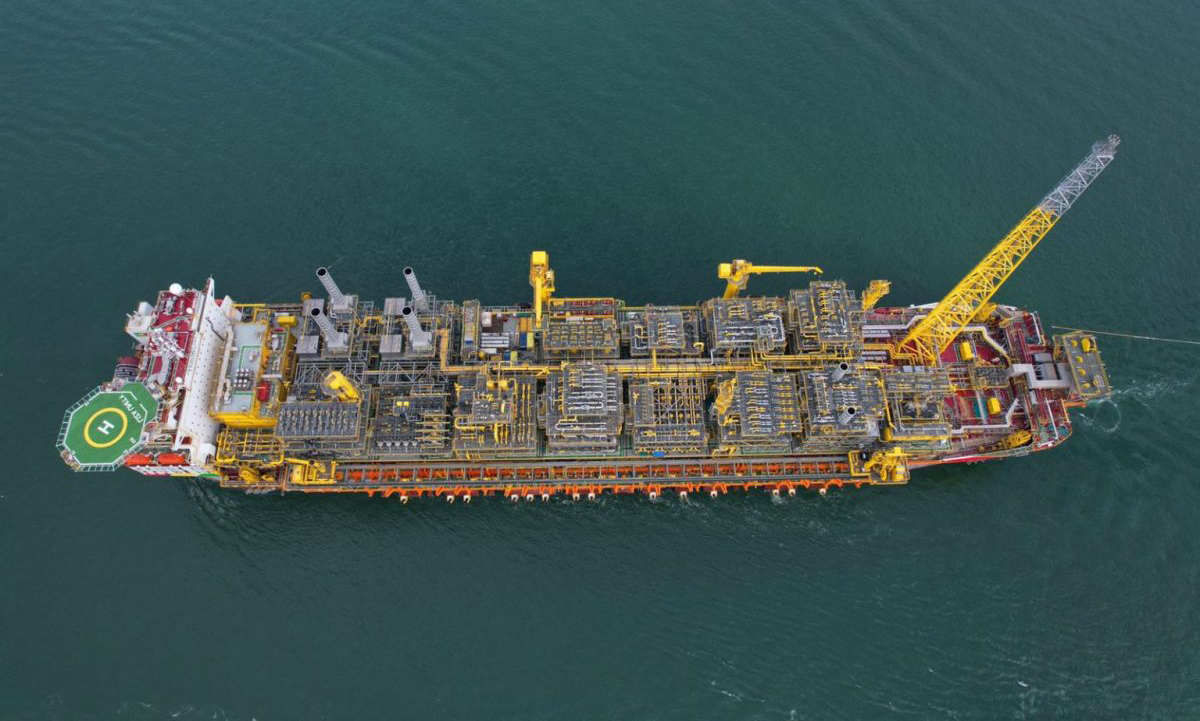ExxonMobil yesterday said that the gas compression and injection systems on the Liza Unity Floating Production, Storage and Offloading (FPSO) vessel have been safely commissioned in around half the normal industry time and has achieved background flare as designed and within the 60-day period outlined in the Liza Phase 2 Environmental Permit.
A statement yesterday from ExxonMobil said that the start-up period involv-ed temporary, non-routine flaring to safely commission the production and gas compression systems.
“This achievement is a testament to the team’s dedication to steady, safe operations. It also demonstrates ExxonMobil’s capabilities as an industry leader and our commitment to operational excellence,” ExxonMobil Guy-ana Production Manager Mike Ryan said in the statement.
It noted that the Liza Phase 2 project design eliminates routine flaring by using produced gas to power the FPSO and by reinjecting gas into the reservoir to conserve the gas and to heighten oil recovery, thereby reducing emissions as opposed to traditional methods.
The team was also able to inaugurate the water-injection system, which is now online and operational. The next step is to activate additional new wells in the ramp up to full production of 220,000 barrels of oil per day during the third quarter.
Meanwhile, the statement said that a new, redesigned Flash Gas Compressor for the Liza Destiny FPSO has arrived in country for installation after extensive testing in Germany. The team is working towards start up in mid-July with the aim of also achieving background flare on that vessel as designed.
“We have relentlessly pursued a solution to this highly complex issue and have never lost sight of that goal. We are pleased that the newly designed machine is now offshore and the teams are
methodically removing the original machine in preparation for the upgraded Flash Gas Compressor installation and startup,” the production manager said.
Over the last several months, the statement said that the performance of the second- and third-stage flash gas compressor on the Liza Destiny has been stable and more than 96 percent of the gas produced was reinjected and/or used to power the vessel.
“Recent optimisation tests have confirmed the performance of the previously upgraded equipment and we were able to boost production to more than 140,000 barrels of oil per day, while maintaining the flare rates to a minimum.” Ryan added.
“Contrary to reports, with the previously installed machine, production on the Destiny would have had to be zero in order to achieve backaround flare. Since start up in December 2019, we have managed production in a manner that balances the environmental commitment and economic needs of the country, in alignment with government priorities”, the statement said.
The statement added that ExxonMobil Guyana continues to work with the relevant government agencies to “ensure compliance with regulations and responsible development of the country’s natural resources”.
Months after the Liza Destiny began producing oil in December 2019 its flash gas compressor experienced major problems requiring prolonged gas flaring above the background level. Remedial efforts also failed and all the government did was to enable a fine for climate endangering flaring instead of shutting down the FPSO until the problem was rectified. Environmentalists and others have pilloried the government and ExxonMobil over the flaring from the Liza Destiny.
Environmentalists and others including former head of the Environmental Protection Agency, Dr Vincent Adams have also expressed disquiet over the 140,000 barrels per day production from Liza Destiny. They have argued that this platform has been rated at a maximum of 120,000 barrels per day and should not be allowed to beyond that figure as risks are heightened. ExxonMobil has rejected these arguments.





